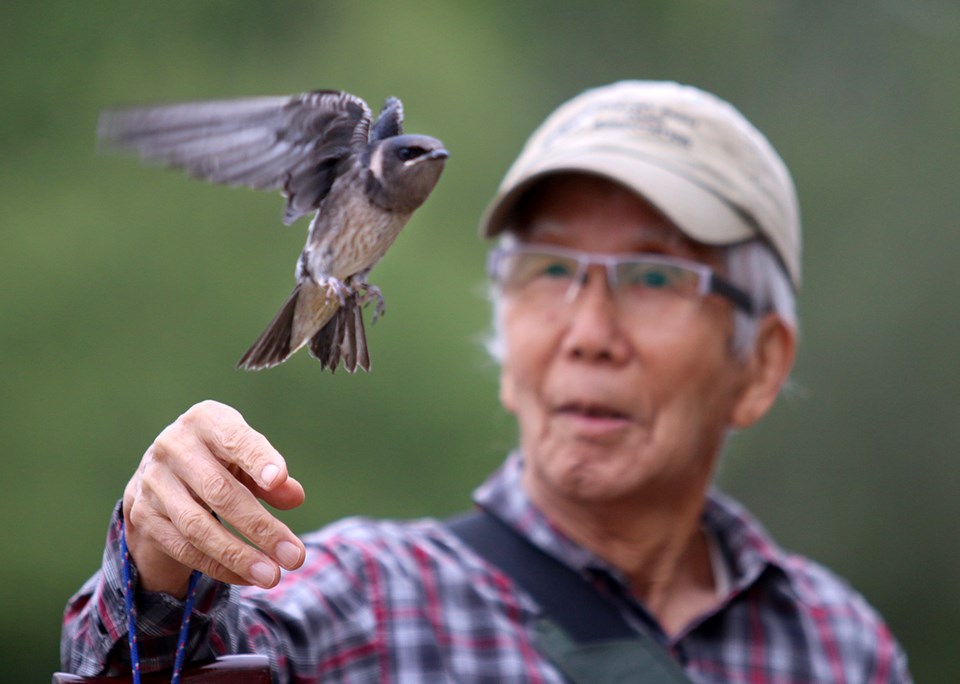A Tri-City conservationist is worried a moment of foolhardiness could undo years of work to re-establish nesting habitat for Purple Martins in Burrard Inlet near Port Moody’s Rocky Point Park.
Kiyoshi Takahashi said a friend recently alerted him to a man he saw climbing one of seven pilings erected in the water.
The pilings are affixed with about 50 wooden boxes that provide homes to the large, broad-chested swallows through the summer months, from about mid-June to mid-August.
Takahashi said, as far as he’s been able to ascertain, none of the nesting boxes was damaged, and most of the birds had already departed on their long journey to their winter homes in Brazil.
But he’s concerned if one person gets away with climbing the pilings, others may follow.
And if the boxes are damaged, or the birds scared off by the intruder, they may not return.
Takahashi, who’s 90 years old, built some of the first nesting boxes that were installed in the mud flats in the early 1990s.
While it took the Purple Martins a few years to find them and establish a nesting colony, his modest contribution of six nesting boxes has grown to a veritable city that’s inhabited every year.
This year, he said, about 30 boxes were occupied by the birds — that’s down from last year when the colony was near capacity, but that’s likely due to the late onset of spring.
Takahashi said Purple Martins are voracious consumers of insects, while flying as high as 500 feet off the ground.
“There’s a definite benefit” to having them around, he said.
According to British Columbia’s Ministry of Environment, Lands and Parks, Purple Martins used to be able to nest in natural sites like snags near salt or fresh water, as well as niches in pilings and crevices in buildings.
However, those options have diminished or been crowded out by European Starlings and House Sparrows.
By 1995 the province had only 55 known active martin nests, all of them in artificial boxes.
Currently, the Purple Martin is on the province’s red list as a candidate for designation as an endangered or threatened species.
Takahashi said if more people know more about the perilous perch Purple Martins have in B.C., they might not be so inclined to try stunts like using their nesting boxes as footsteps as they climb pilings. He’s talking to the City of Port Moody about affixing signs on each of the pilings to educate passing swimmers or boaters about the sensitivity of the nesting area.
“It’s best to educate the people to respect the wildlife,” Takahashi said.
In the meantime, he hopes others don’t take one man’s stunt as a challenge to replicate it.
“If they disturb the birds in the season, they could be scared and they could abandon their nests,” Takahashi said.
“I don’t really want to see that happen.”



